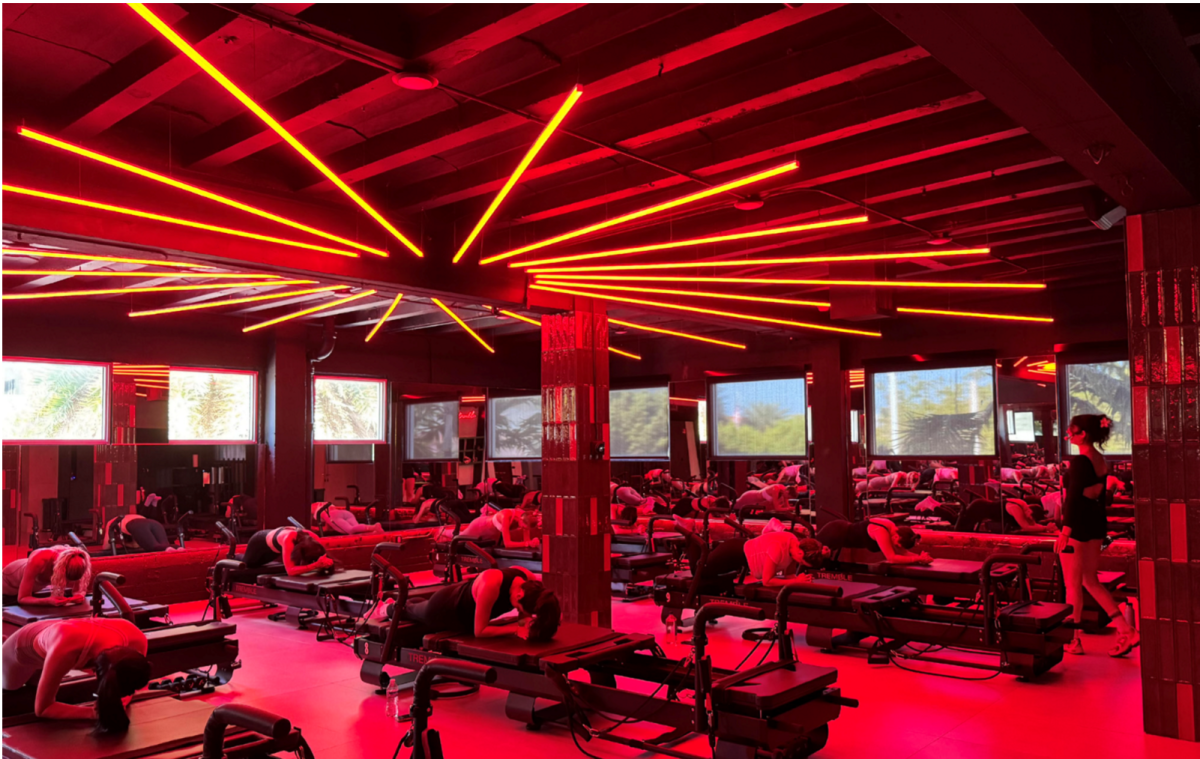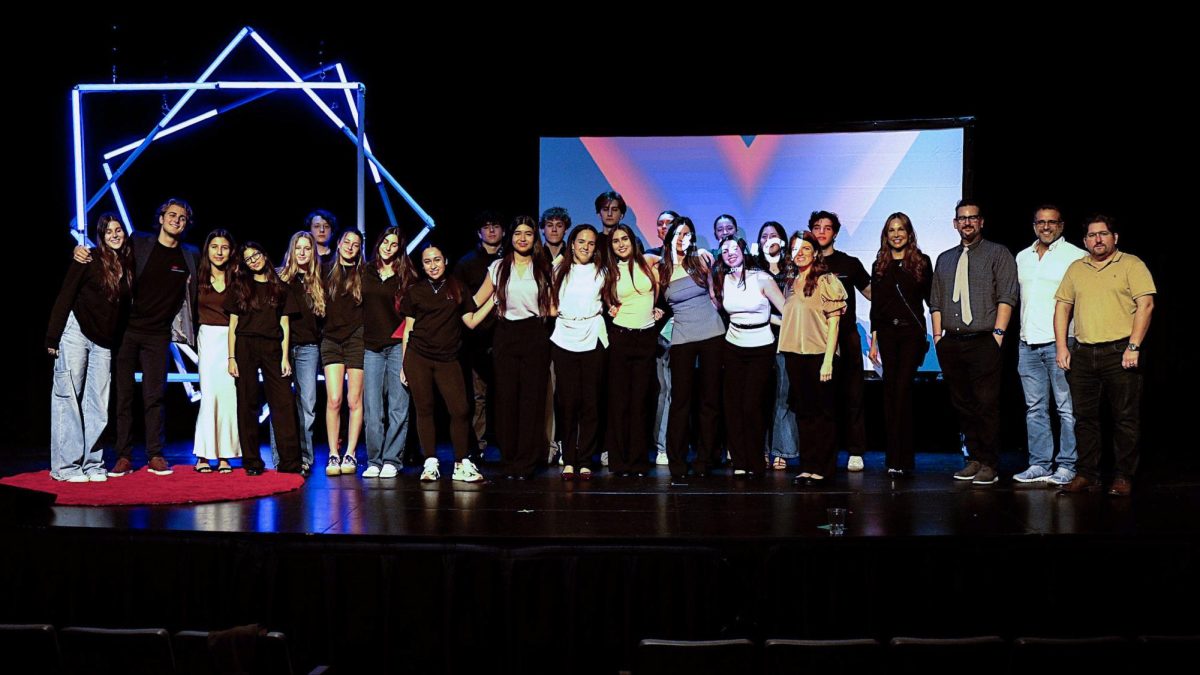Students at Ransom Everglades play a huge variety of video games, and some, if asked, would consider themselves the best in the school at the game they play. But there’s a difference between thinking you’re the best and actually being the best. Here are four students who have put in the time and dedication it takes to achieve top rankings—and in some cases, professional earnings—in four very different games.
“Fortnite.” It needs no introduction. But for those who are unaware, “Fortnite” is a ‘battle royale’ game, meaning 100 players compete to be the last one standing. The main mechanic that differentiates it from other battle royales is building. Building is an integral part of the game and contributes to the game’s extremely high skill ceiling. This high skill ceiling allows a “Fortnite” competitive scene to exist.
There are many ways to judge the skill of a player; generally, competitive “Fortnite” players are judged by their earnings. But what are earnings?
Earnings are simply how much money someone has made playing “Fortnite” competitively. The only money counted as part of someone’s earnings is tournament prize money, so things like money made streaming don’t count. It sounds silly, but the top players’ earnings are all in the hundreds of thousands of dollars, with some even going into the millions. A competitive player’s first earnings are a massive milestone in their “Fortnite” career.
Bryan West ’26 started playing “Fortnite” in middle school, like many other students. But he never dropped it. “I’ve been playing it consistently since I first picked it up,” he said. Another difference between Bryan and your average “Fortnite” player is the way he plays the game. “I find it more fun to improve my mechanics and skill than just playing the game. It just feels more rewarding.”
Honing his skills has allowed him to rack up some impressive stats over the years. In solo matches he’s collected 2562 kills (top 0.2% of all players), in duos 3450 kills (top 0.01%), and in squads 1864 kills (top 1.6%). He hasn’t had problems sealing the deal either, with 30 solo wins (top 0.5%), 72 duo wins (top 0.5%) and 55 squad wins (top 4.8%).
But to Bryan, the stats are just that. “The stats are cool, but are far from being what I’m most proud of. Anyone can put up numbers with enough time.” To him, “tournaments are where it’s at.” The competitive draw of competition is intriguing but can be extremely humbling. “I remember when I played in my first tournament. I was pretty confident going in, but then I got destroyed. I wanted to do better.”
And over time, he did, eventually placing third in a local tournament. “I didn’t even win it, but competing against and beating players at that level of competition was so fun.” In this tournament West made his first earnings. In other words, he made money playing “Fortnite.”
“Clash of Clans” is an older game. While it’s still alive and well, its ‘hay day’ was in 2015, where it reached a peak player count that it just hasn’t been able to replicate since. To retain the players who want to keep playing, Supercell, the developer behind “Clash of Clans,” keeps updating and adding more things to achieve.
So how does Clash of Clans work? Essentially, the objective of Clash of Clans is to build and upgrade your base to defend against raids and build and strengthen your army to raid stronger bases. The main way of measuring the strength of a base is the ‘Town Hall’ level (TH), which is the hub of the base. The TH level also permits the building and upgrading of certain buildings.
In 2014 when Clash of Clans first came out, the best base someone could have was a ‘maxed’ TH10. This meant the player’s base had a level 10 town hall and that every other building and wall was leveled up as much as possible. Since then, Supercell has released five new town hall levels, each coming with new buildings and mechanics. To ensure players who have been playing since the release never run out of things to do, each town hall level takes exponentially more time and effort to max out than the last.
Today, having a maxed-out TH15 is a monumental task. The two restricting factors are the in-game resources needed to build and upgrade every building fully, and the time it takes to do so. If one didn’t want to spend the time and effort to reach this feat, they could ‘gem’ their base, meaning they would spend money on in-game currency which can be used to buy resources and complete upgrades instantly.
To give a sense of how difficult it is to max out a TH15 base, players on the internet calculated how much it would cost to ‘gem’ a fresh base all the way to max TH15. This calculation came out to $12,068.77. This doesn’t even include the gems it would take to speed up the upgrades. So, if you have $12,068.77 and 2,860 days, five hours, and seven minutes to spare, you can reach max TH15!
In 2015, or second grade for Noa Abboud ’24, Abboud downloaded Clash of Clans. Over the next five years he ‘clashed’ like the average player. “I played on and off and made decent progress for a couple years,” he said. But in seventh grade a switch flipped. “I started noticing how much faster I could make progress if I just did a couple things daily,” he explained. Here he’s referring to a handful of daily mechanics, like star bonuses, that reward players for doing several successful raids every day, or making sure that all his upgrade-generating ‘builders’ are all always working.
His progress over the past 5 years has been a testament to consistency. “Since 7th grade, whenever I had some downtime, I would go on ‘Clash of Clans’ and do those things I had to do daily. It wasn’t really time intensive; it was just something I would do daily.” His efforts have culminated in a max TH15.
“I’m proud of it. If someone started a fresh account today, they would have to play almost non-stop for six years to get to where I am. That’s what makes it so cool to me.” Finally maxing out his last building and essentially beating the game “felt really rewarding when I finally did it. But Supercell just introduced Town Hall 16, so I’m not stopping,” he chuckled.
“Superhot” is an action-packed first-person shooter that involves fighting a whole room of enemies, giving the player a John Wick or Jason Bourne feeling. The main mechanic of the game is that time only moves when the player moves, allowing the player to dodge bullets, calculate battle plans, and take total control of the situation.
“Superhot” was initially released in February of 2016 to decent success. However, in December of that year, the “Superhot” team released “Superhot VR.” The VR edition, and an assortment of streamers playing the game, brought waves of new players.
After the story is completed and the challenge of the game is gone, some players are left wanting more. For many of these players the best way to keep playing the game while still imposing some sort of challenge is speed running. This involves playing the game over and over to see how quickly they can complete the game. While it sounds silly, entire internet communities are built around this phenomenon. People love to compare their times and compete to lower them.
Additionally, many level-based games have single-level leaderboards. These are the records for beating a single level. This form of speed running is popular because if the player makes a mistake, they only have to replay the level instead of starting the game all over again.
“Superhot VR” poses a unique challenge to speed runners with its time slowing mechanic. Players can either compare the amount of real word time it takes or the amount of in-game time it takes to complete a level.
Jack Touby ’23 was a part of the “Superhot VR” speed running community. “I saw other peoples’ times on certain levels and thought, ‘I could totally beat that,’” he said. So he put his head down and started lowering his times.
While playing the same level over and over again seems repetitive, to Touby, “It was really fun. There were a lot of little strategies I would try to perfect; each one was like its own challenge. Finally tying them all together in a complete run is super satisfying.” This system of breaking each run into parts gave Touby a formula.
After lots of runs, Touby finally set a world record. “It was such a rush seeing the number pop up on the screen,” he explained. But he didn’t stop there. “After I beat one world record, I sorta knew how it worked, and since it was so fun, I thought why not try another level?”
Jack repeated his process and set the world record on another level. “It took over six hours, but to this day I’m proud of it.” Since then, his records have been beaten, but both remain in the top 10. “It’s been over 3 years since I set these records, and they’ve been broken, but I don’t really care about that. I put my head down and became the best in the world at some point. I just quit when I was on top.”
“Brawl Stars” is another Supercell-produced mobile game, but it couldn’t be more different from “Clash of Clans.” “Brawl Stars” is a fast-paced, arena-style third-person shooter. If that all sounds like video game jargon, essentially, the player picks a hero to play from a roster of characters and controls them with onscreen joysticks from a bird’s eye view, fighting in an arena battle.
The main draw of Brawl Stars is the wide variety of heroes (a.k.a Brawlers) and game modes, which allow players to find a niche they enjoy. With 32 different game modes, in which each of the 76 Brawlers plays a unique rolem it’s easy to find a certain playstyle that suits you.
In each of the game modes there is a trophy system that allows players to compare themselves to players across the globe. The system is simple: you win, you gain trophies; you lose, you lose trophies, and players with similar levels of trophies are put into each match.
To say Alejandro Urdaneta ’24 found his “Brawl Stars” niche would be an understatement. Originally, Urdaneta picked up the game as something to kill boredom. “I played a lot of ‘Brawl Stars’ on the way to tennis practice before I could drive and whenever I was bored and didn’t really feel like booting up my Xbox,” he said. Throughout this time, he found a game mode and character he liked, and it was from here that things really started to take off. “Once I started to get really good at it, I started to play more and more,” he said.
But what was that niche? Urdaneta found success playing the Brawler ‘El Primo’ in the three-on-three Brawl Ball game mode, which was a soccer match allowing the use of Brawlers’ unique abilities to change the tide of the battle. “As El Primo, I was a striker. El Primo’s special ability was a flying elbow jump which would deal damage and knock players out. Doing that on the soccer ball was my main way of scoring.”
Brawl Ball is a game that requires teamwork, especially at the higher trophy levels. “Initially I played with randoms, but I started to meet people in game who worked well with me. I would team up with these players, and a team dynamic started to develop.”
It was at this point that Urdaneta started to really climb up the competitive ladder. “These other players and I would ‘trophy push’: try to collect as many trophies as possible and climb the leader board,” he said. Competing at that level required a complex team composition. “One player would heal, making sure nobody would die putting us a man down, one player would stun the opponent, and then I would score while they were stunned,” he said.
Urdaneta’s team composition and individual skill won game after game, which ultimately led to him becoming the fourth highest ranked El Primo at Brawl Ball in the world.







